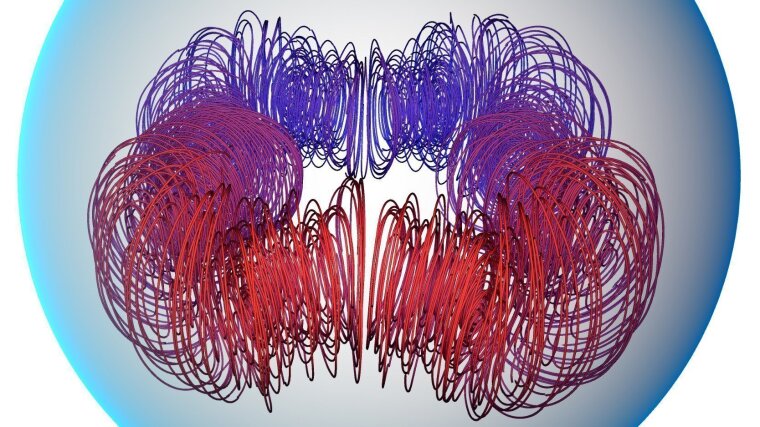
- Research
Published: | By: Stephan Laudien
It is difficult to grasp the sheer dimensions of a supernova explosion and even more difficult to understand the concept of neutron star produced after the explosion. As a massive star collapses, the star’s core of about a Solar mass can be compressed into a ball with a radius of around ten kilometers. In the process, the gravitational field strength of this dying star would reach around a hundred billion times that of the Earth. In such extreme objects the magnetic field generated during the collapse reaches intensities of more than hundreds of million times stronger than Earth's magnetic field and a billion (one thousand million) times stronger than medical magnetic resonance imaging machines. This magnetic field allows us to observe these neutron stars, as they are known, as pulsars.
“Although we have been observing and studying neutron stars for 50 years, we still don’t fully understand the configuration of the magnetic fields within them,” says Prof. Sebastiano Bernuzzi of Friedrich Schiller University Jena, Germany. Together with his colleague, Prof. Brynmor Haskell of the University of Warsaw, Poland, the Jena-based physicist hopes to change that. The two researchers have now launched the “MERLIN” project with support from the German Research Foundation (Deutsche Forschungsgemeinschaft, DFG) and the Polish National Science Centre (Narodowe Centrum Nauki, NCN) as part of the EU’s Weave initiative.
Combining expertise in Jena and Warsaw
This new research project aims to combine the expertise of Haskell’s group in the astrophysics of pulsars with the expertise of Prof. Bernuzzi’s Jena-based group in constructing numerical simulations of neutron stars. The specific research questions include whether there is an equilibrium configuration for the magnetic field within a neutron star—and, if so, how this equilibrium is achieved. The electromagnetic waves emitted by neutron stars are routinely intercepted by telescopes in the radio and X-ray range, which enables us to measure the mass and radius of stars. “We will lay the theoretical foundations for future observations by investigating the magnetic field dynamics within neutron stars and the role of turbulence in their development,” says Sebastiano Bernuzzi. This involves applying Einstein’s general theory of relativity to model the development of super-strong magnetic fields and build precise astrophysical models. Bernuzzi believes that, in the near future, it will also be possible to observe isolated neutron stars by means of their gravitational waves: these gravitational-wave pulsars transmit other information that complements their electromagnetic waves.
Entitled “The Magnetic Field Dynamics in Neutron Stars”, the MERLIN projectExternal link will commence in 2024 and extend for a three-year term. Funding of around half a million euros has been awarded to the project.